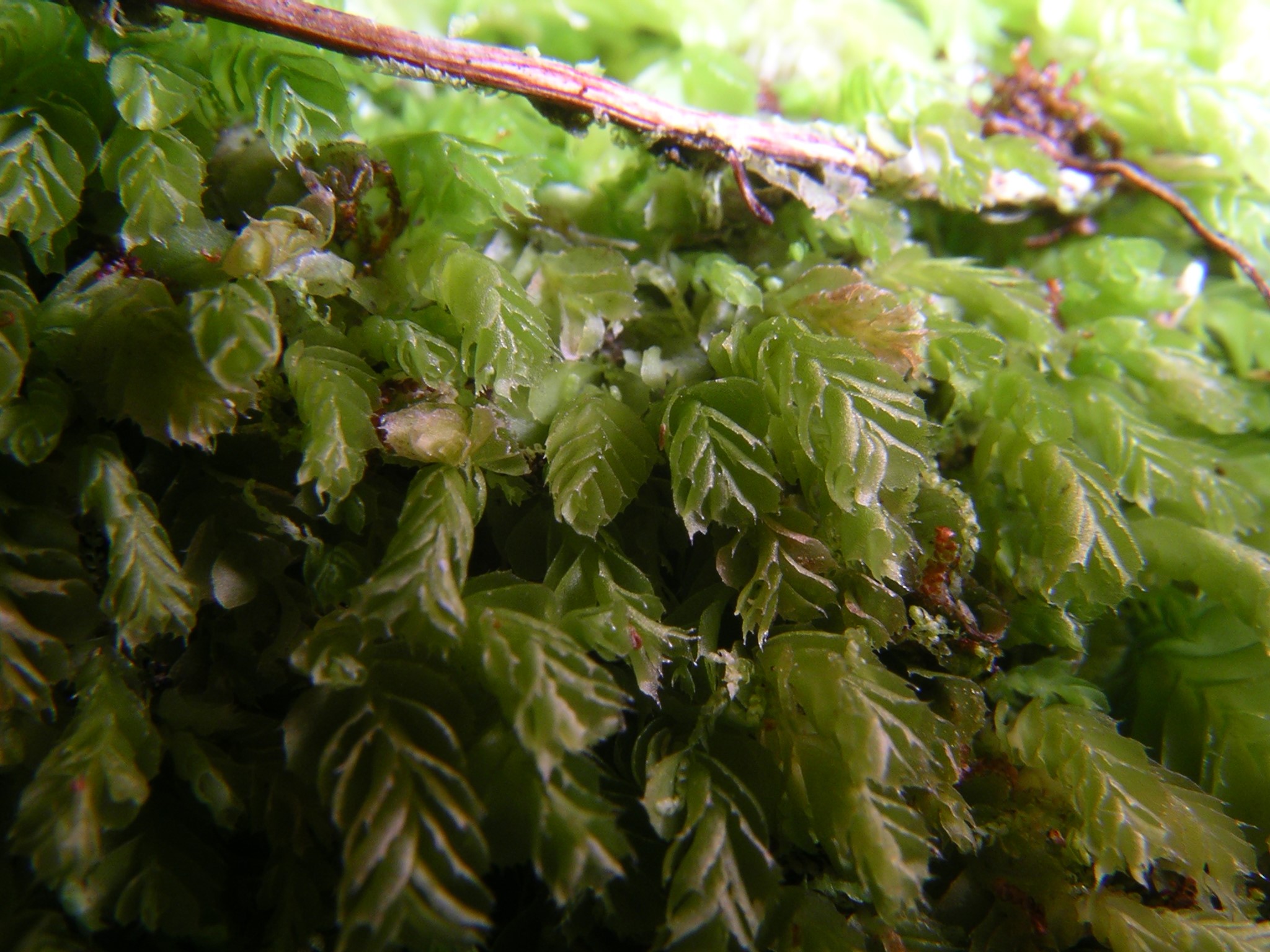Bryophyte of the Month
Acrobolbus knightii (Mitt.) Briscoe
Acrobolbus knightii was described by William Mitten in 1867 (as Marsupidium knightii Mitt.) from a specimen collected in New Zealand by Charles Knight. It grows on tree trunks and branches and on rotting logs, often in extensive mats, and less commonly on soil.
The leaves are roundly oblong to quadrate, concave, pale green, rarely more than 1.5 mm long, arranged in two ranks and inserted succubously. They are commonly angled upwards towards the shoot tip and overlapping, so that the stem is hidden. The leaf margins are strongly toothed and the teeth are often elongated into spines or cilia. Microscopically the leaf cells are mostly hexagonal, with thin walls and very small trigones. The cells are opaque because of the presence of numerous brownish oil bodies. The capsule develops in a marsupium on a short branch, and the marsupia are usually in pairs.
Acrobolbus knightii is common throughout New Zealand, including the Chatham Islands and Raoul Island in the Kermadecs. The range extends to Australia (New South Wales and northern Queensland) and New Caledonia.
Further reading
Briscoe L, Engel JJ. Söderström L, Hagborg A & von Konrat M 2015. Notes on early land plants today. 66. Nomenclatural notes on Acrobolbaceae. Phytotaxa 202: 58–62.
Engel JJ & Glenny D 2019. A Flora of the Liverworts and Hornworts of New Zealand. Volume 2. Missouri Botanical Garden Press: St Louis.
Hodgson EA 1958. New Zealand Hepaticae (liverworts) — X. Marsupial genera of New Zealand. Transactions of the Royal Society of New Zealand 85: 565–584.
Mitten W 1867. Order V. Hepaticae. In Hooker JD, Handbook of the New Zealand Flora Volume II, Part II. Reeve & Co.: Covent Garden (pages 750–755).
